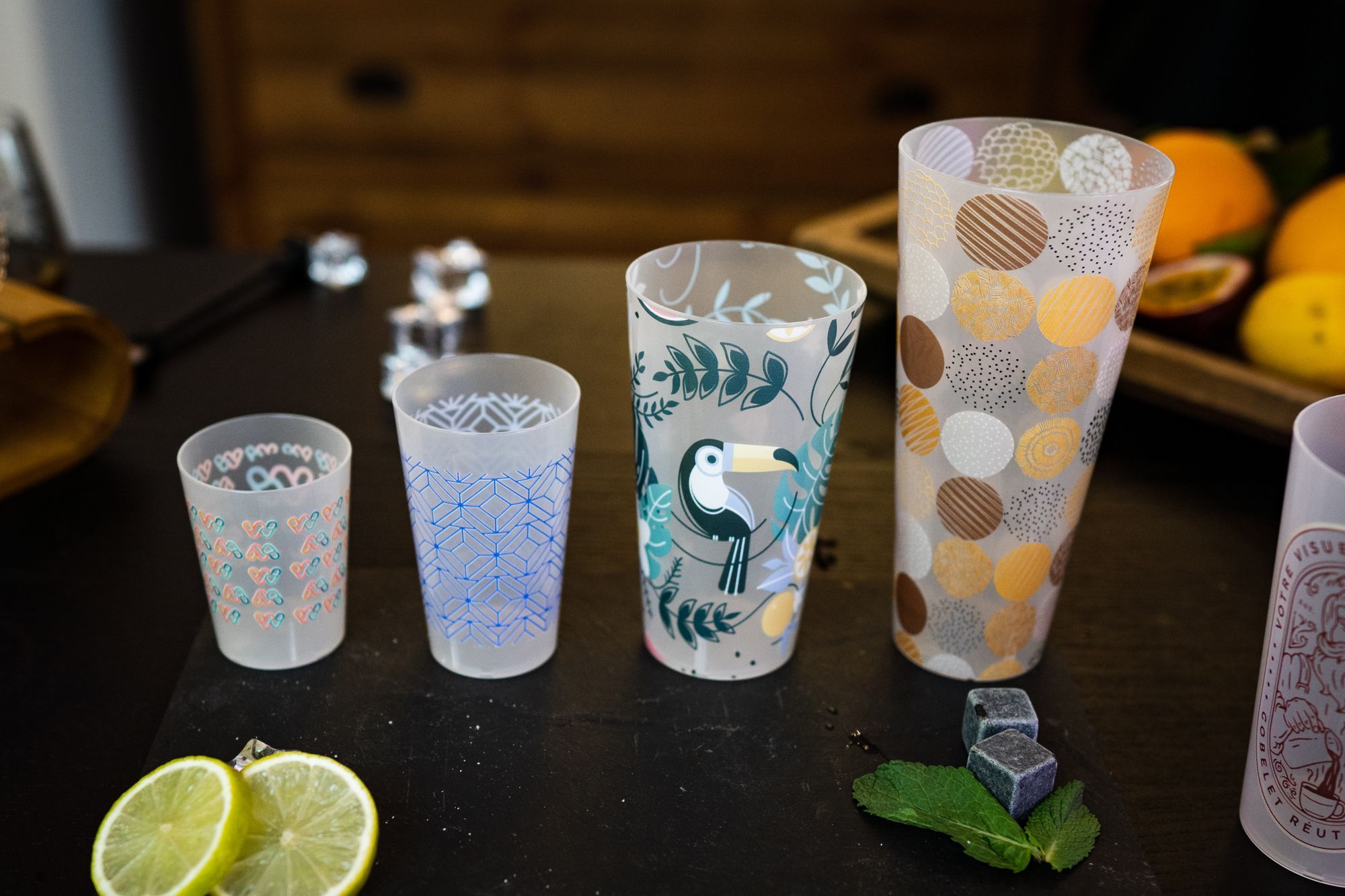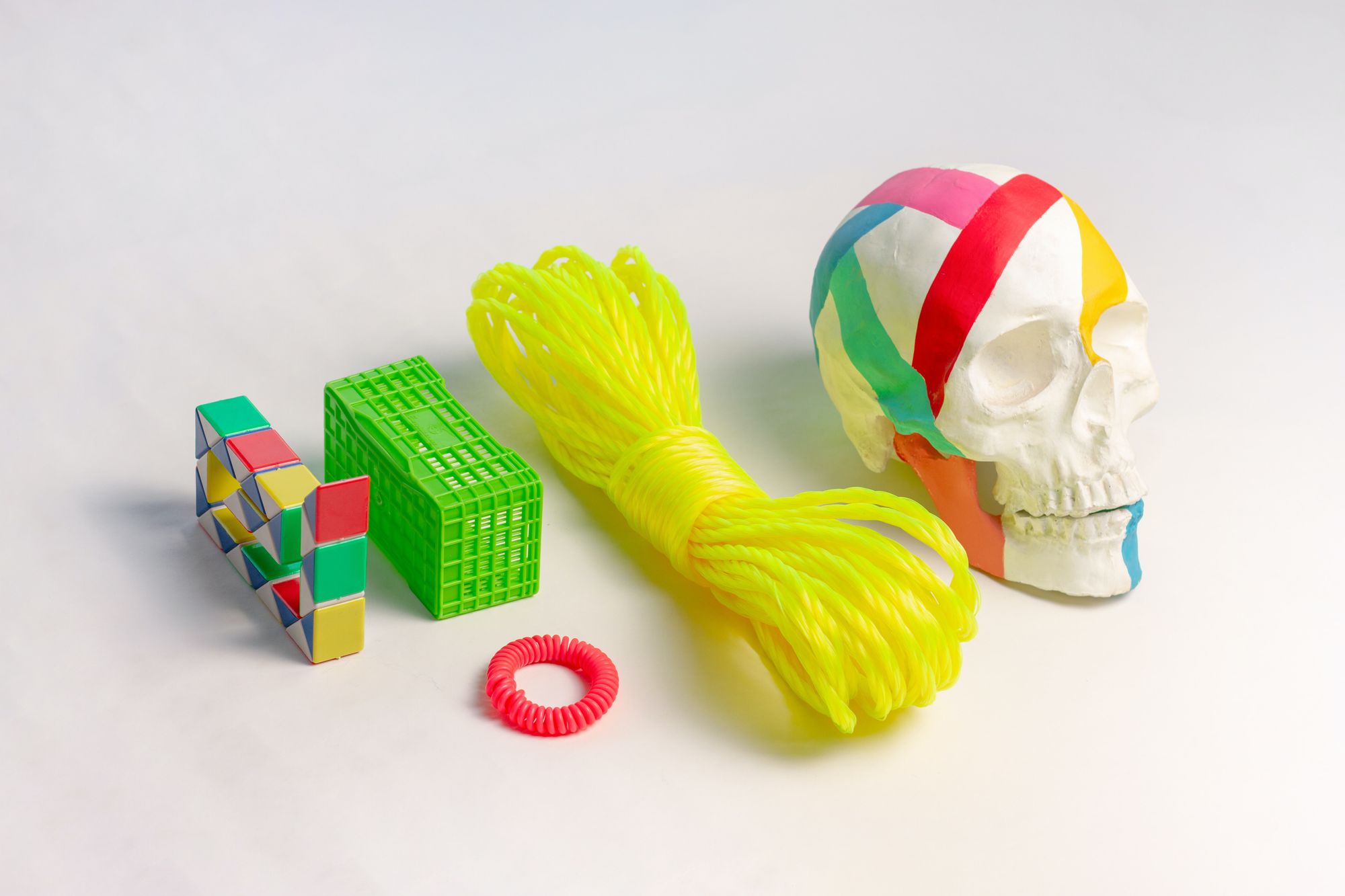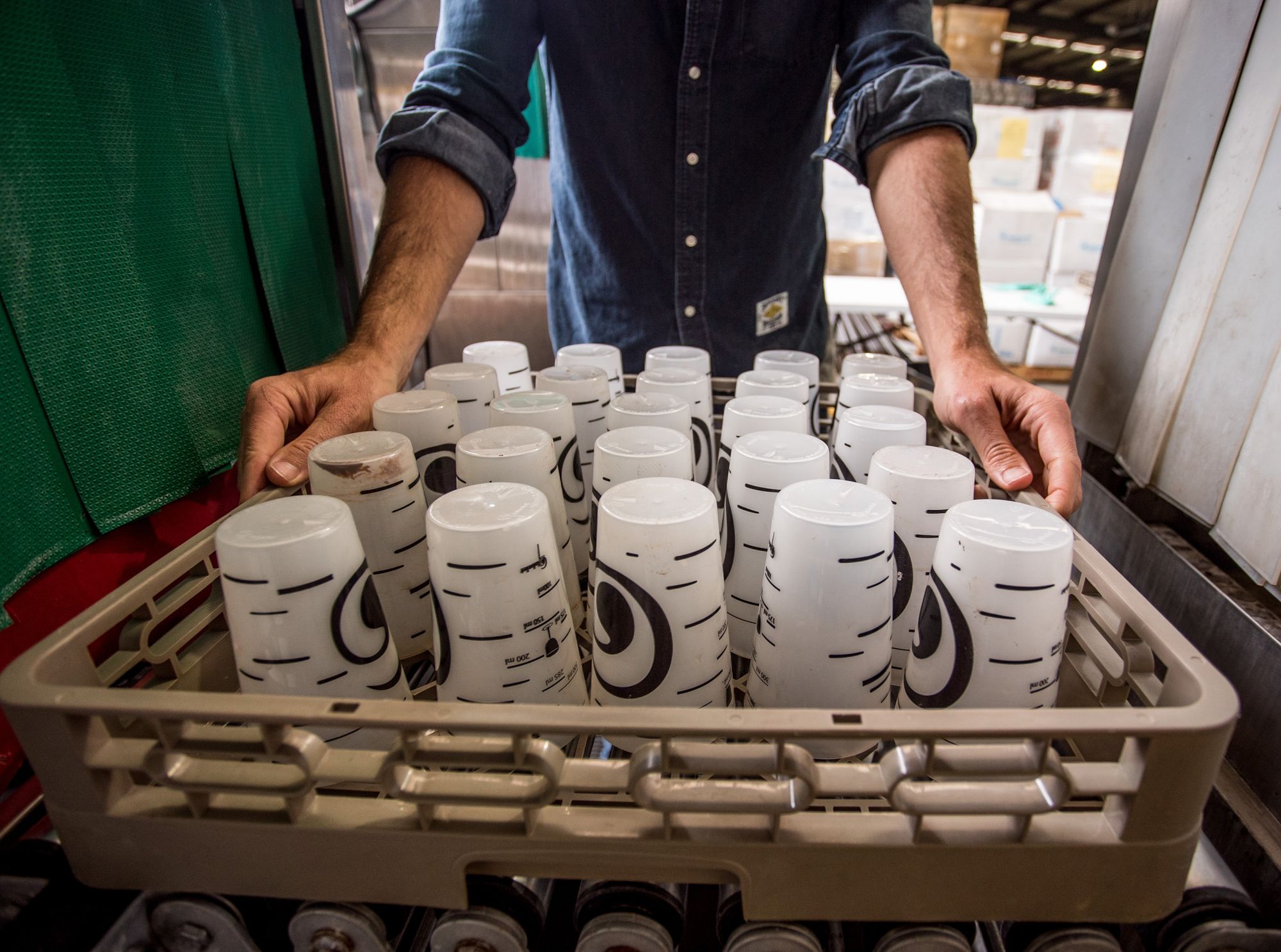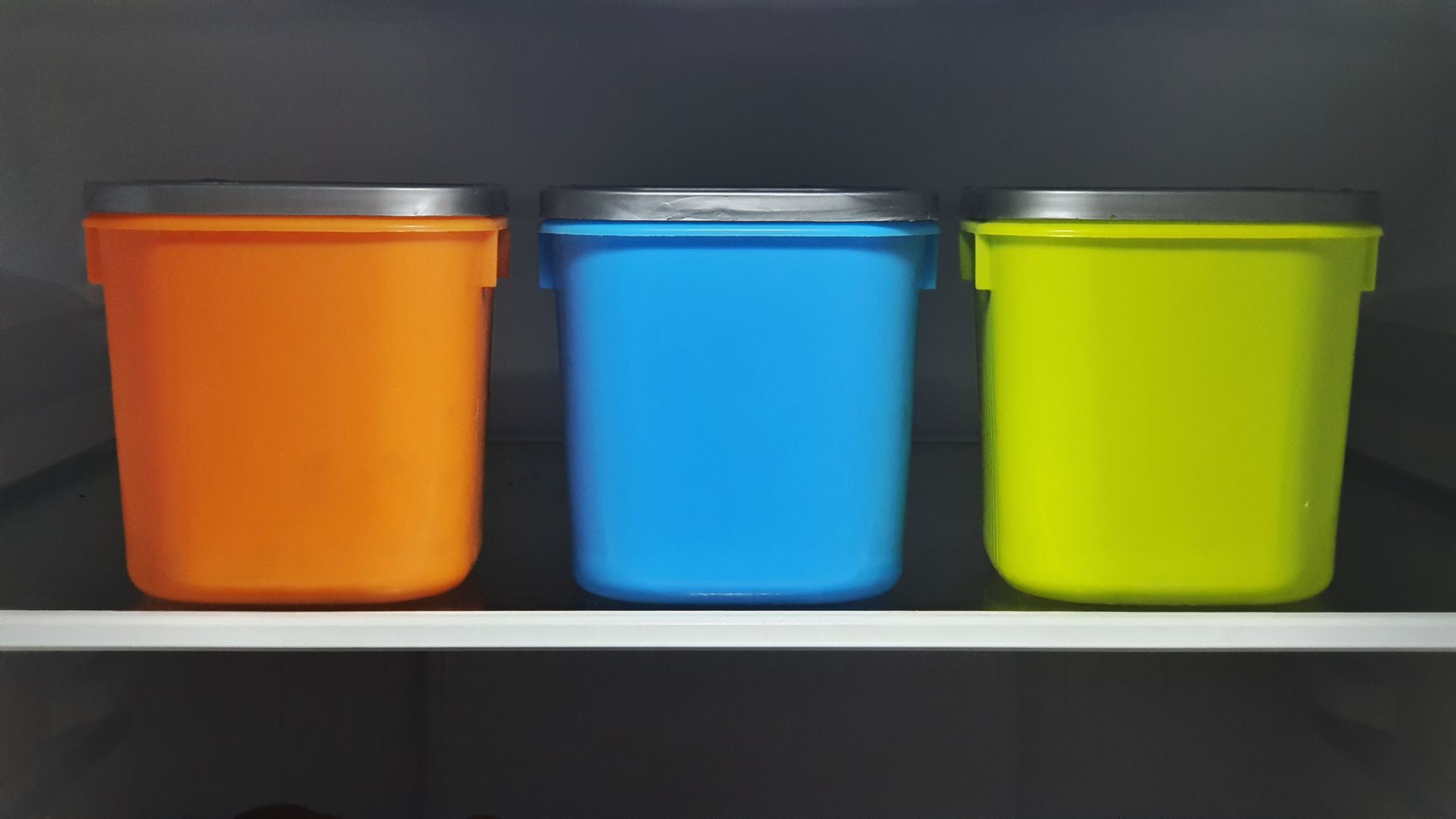Are you ready to take your plastic manufacturing game to the next level? Whether you're a seasoned manufacturer or just starting out, it's important to know the secrets to produce the most effective plastics.
Plastics are essential to modern life, with applications ranging from packaging to electronics and construction. The plastic manufacturing industry has seen tremendous growth in recent years, with the United States being a key player in the global market.
Producing effective plastics requires expertise in the latest manufacturing techniques and an understanding of the properties and applications of different types of plastic.
As such, manufacturers need to keep abreast of industry trends, adopt innovative technologies, and implement best practices to ensure their products meet quality and performance standards.

Get ready to learn the tips and tricks to create high-quality plastics that meet your needs and exceed your customers' expectations. So, let's dive in and discover the ultimate guide to manufacturing the most effective plastics!
Here's what we shall cover in this post:
- Introduction to Plastic Manufacturing
- Raw Materials for Plastic Production
- The Role of Automation in Plastic Manufacturing
- The Benefits of Quality Control in Plastic Production
- How to Enhance Safety in Plastic Manufacturing
- Trends in Plastic Manufacturing
- The Importance of Sustainability in Plastic Manufacturing
- Conclusion
- Key Takeaways
Introduction to Plastic Manufacturing
Plastic manufacturing is the process of creating plastic products using various techniques and equipment. Plastics are synthetic materials made from polymers and are widely used in various industries, including packaging, construction, automotive, electronics, and healthcare.
- The production of plastics involves several steps, including material selection, compounding, molding, extrusion, and finishing.
- Raw materials used in plastic manufacturing can include petrochemicals, biomass, and recycled materials.
- The plastic manufacturing process can be complex and requires specialized knowledge and skills, and attention to safety, quality, and environmental considerations.
- Plastic products can range from simple household items to complex components used in advanced technologies.
- Plastic manufacturing has revolutionized modern society by providing lightweight, durable, and versatile materials.
However, it also poses challenges related to waste management and environmental sustainability.
Types of Plastics and Their Uses
Plastics are widely used in various industries and applications due to their versatility, durability, and low cost. Different types of plastics have unique properties and characteristics that make them suitable for different uses.
This section will discuss the various types of plastics and their uses.
- Polyethylene (PE): Polyethylene is a thermoplastic polymer that is used to make a variety of products, including packaging materials, plastic bags, and plastic bottles. It is also used in the production of pipes, toys, and wire and cable insulation. PE is popular due to its excellent chemical resistance and low cost.
- Polypropylene (PP): Polypropylene is a versatile plastic that is used in a wide range of applications, including packaging, automotive parts, and household goods. It is also used in the production of carpets, rope, and thermal insulation. PP has excellent chemical resistance, a high melting point, and good mechanical properties, making it suitable for various uses.
- Polyvinyl Chloride (PVC): PVC is a widely used plastic that is used in the production of pipes, window frames, flooring, and various other applications. It is also used in the production of medical devices and wire insulation. PVC is known for its durability and low cost.
- Polystyrene (PS): Polystyrene is a popular plastic that is used in the production of disposable cups, packaging materials, and insulation. It is also used in the production of CD and DVD cases. PS is lightweight and has good thermal insulation properties, making it suitable for various uses.
- Acrylonitrile Butadiene Styrene (ABS): ABS is a popular plastic that is used in the production of toys, automotive parts, and electronic housings. It is also used in the production of pipes and fittings. ABS is known for its excellent impact resistance and good mechanical properties.
- Polycarbonate (PC): Polycarbonate is a strong and durable plastic used in producing eyeglasses, automotive parts, and electronic components. It is also used in the production of roofing sheets and security glazing. PC is known for its excellent impact resistance and transparency.
- Polyethylene Terephthalate (PET): PET is a popular plastic used in producing beverage bottles, food containers, and packaging materials. It is also used in the production of clothing and carpet fibers. PET is known for its excellent mechanical properties, durability, and resistance to moisture.
- Nylon (PA): Nylon is a synthetic polymer that is used in the production of various products, including clothing, automotive parts, and industrial components. It is also used in the production of fishing nets and toothbrush bristles. Nylon is known for its excellent mechanical properties and resistance to abrasion.
- Polyurethane (PU): Polyurethane is a versatile plastic that is used in the production of various products, including furniture, automotive parts, and insulation. It is also used in the production of footwear and sports equipment. PU is known for its excellent mechanical properties and resistance to abrasion.
- Polylactic Acid (PLA): PLA is a biodegradable plastic that is used in the production of various products, including packaging materials and disposable utensils. It is also used in the production of medical implants and drug delivery systems. PLA is known for its biodegradability and low carbon footprint.
Raw Materials for Plastic Production
Raw materials are the building blocks of plastic production. They are essential for creating the various types of plastics that we use in our everyday lives. This section will discuss the raw materials used in plastic production and their properties.
Petrochemicals: Petrochemicals are the most common raw materials used in plastic production. They are derived from fossil fuels and include materials such as ethane, propane, butane, and naphtha.
These materials are used as feedstocks for producing a variety of plastics, including polyethylene, polypropylene, and polyvinyl chloride (PVC).
Monomers: Monomers are small molecules that combine to form polymers. Some examples of monomers used in plastic production include ethylene, propylene, styrene, vinyl chloride, and acrylonitrile.
These monomers are polymerized to create a wide range of plastics, such as polystyrene, PVC, and acrylics.
Additives: Additives are materials that are added to plastic formulations to modify their properties or enhance their performance. Common additives in plastic production include plasticizers, stabilizers, colorants, and flame retardants. Plasticizers are added to make plastics more flexible, while stabilizers are added to improve their resistance to degradation over time.
Bioplastics: Bioplastics are made from renewable materials such as starches, cellulose, and other plant-based materials. These materials can be used to create a variety of plastics, including polylactic acid (PLA), which is used in food packaging and other applications.
Recycled Materials: Recycled materials can also be used as raw materials for plastic production. These materials are typically derived from post-consumer waste, such as plastic bottles and packaging. Recycled plastics can be used to create a variety of products, including new plastic bottles, clothing, and building materials.
Natural Materials: Natural materials such as rubber and latex can also be used in plastic production. These materials are used to create a variety of products, including automotive components, medical devices, and household goods.
Overview of Plastic Manufacturing Processes
Injection Molding: Injection molding is a widely used plastic manufacturing process that involves injecting molten plastic into a mold cavity to create a specific shape. The process is fast, highly repeatable, and suitable for producing complex shapes with high precision.
Injection molding is commonly used to produce products such as toys, automotive parts, and electronic enclosures.
Blow Molding: Blow molding is a process used to produce hollow objects such as bottles, containers, and drums. The process involves melting plastic resin and blowing it into a mold cavity to create the desired shape. Blow molding is highly efficient and suitable for high-volume production.
Extrusion: Extrusion is a process used to produce continuous lengths of plastic products such as pipes, tubes, and sheeting.
The process involves melting plastic resin and pushing it through a die to create a specific cross-sectional shape. Extrusion is highly efficient, cost-effective, and suitable for producing products with uniform cross-sections.
Rotational Molding: Rotational molding is a process used to produce large, hollow plastic products such as tanks, containers, and playground equipment. The process involves rotating a mold around two perpendicular axes while heating it from the outside.
The molten plastic resin is added to the mold, and as it cools, it solidifies into the desired shape.
Thermoforming: Thermoforming is a process used to produce plastic products such as packaging, trays, and disposable cups. The process involves heating a sheet of plastic until it becomes pliable and then forming it over a mold using pressure and vacuum.
Thermoforming is highly efficient, cost-effective, and suitable for producing products with low to medium volumes.
Compression Molding: Compression molding is a process used to produce products with complex shapes, such as automotive parts, electrical components, and appliance parts.
The process involves placing a pre-measured amount of plastic resin in a heated mold and compressing it using a hydraulic press. The pressure and heat cause the plastic to flow and fill the mold cavity.
Transfer Molding: Transfer molding is a process similar to compression molding but involves using a plunger to force the plastic resin from a chamber into the mold cavity. The process is suitable for producing products with intricate shapes and small dimensions.
The Role of Automation in Plastic Manufacturing
Automation has been transforming the manufacturing industry for many years, and plastic manufacturing is no exception. With advances in technology, plastic manufacturers are now able to automate many of their processes, which has led to increased efficiency, productivity, and safety in their operations.
Here are some of the ways in which automation is playing a significant role in plastic manufacturing:
- Increased Efficiency: Automation in plastic manufacturing can help increase the speed and efficiency of the production process. Automated machines and equipment can perform tasks faster and more accurately than human workers, which can help to reduce production time and increase output.
- Cost Savings: Automation can help reduce labor costs in plastic manufacturing by replacing human workers with machines. This can help reduce the cost of production and increase profitability for manufacturers.
- Improved Quality: Automated processes can help ensure consistency and accuracy in the manufacturing process, leading to improved quality of products. This can help reduce defects and improve customer satisfaction.
- Enhanced Safety: Automation can help to create a safer working environment for plastic manufacturing employees. Automated machines and equipment can perform dangerous tasks, reducing the risk of injury to human workers.
- Increased Flexibility: Automation in plastic manufacturing can provide greater flexibility in production, enabling manufacturers to adapt to changing customer demands and production needs quickly.
- Predictive Maintenance: With the help of sensors and IoT devices, automated machines and equipment can detect any issues and perform predictive maintenance, reducing downtime and maintenance costs.
- Data Analytics: Automation can provide manufacturers with real-time data on production, enabling them to identify areas for improvement and optimize the manufacturing process.
- Remote Monitoring: Automation enables manufacturers to remotely monitor their production processes, enabling them to identify and address any issues quickly.
- Integration with Other Systems: Automated systems can be integrated with other systems, such as inventory management and logistics, to provide a seamless and efficient production process.
- Sustainability: Automation can also help plastic manufacturers to become more sustainable by reducing waste, energy consumption, and environmental impact.
The Benefits of Quality Control in Plastic Production
Plastic production is a complex process involving various stages, from sourcing raw materials to the final product delivery. Quality control is crucial to this process as it ensures that the final product meets the required standards and specifications.
Here are some benefits of quality control in plastic production:
Meeting Customer Requirements: Quality control helps in ensuring that the final product meets the specifications and requirements of the customer. It helps in identifying defects early on in the process, which can be rectified before the product is delivered to the customer.
This helps reduce rejections, returns, and customer complaints, resulting in higher customer satisfaction.
Consistent Quality: Quality control helps maintain consistent product quality throughout the production process.
By monitoring and controlling the process parameters, the quality of the product can be maintained within the desired limits. This helps reduce the product's variability, resulting in improved performance and reliability.
Cost Reduction: Quality control helps in identifying defects and issues early on in the process, which can be rectified before the product is completed.
This helps in reducing the cost of rework, scrap, and rejections. It also helps in reducing the cost of warranty claims and customer complaints, resulting in overall cost reduction.
Compliance: Quality control helps in ensuring that the final product meets the regulatory and legal requirements of the industry. This helps in avoiding fines, penalties, and legal issues that may arise due to non-compliance.
Improved Efficiency: Quality control helps improve the production process's efficiency. By identifying and eliminating defects and issues, the process can be streamlined, resulting in improved productivity, reduced lead times, and faster delivery of the product.
Competitive Advantage: Quality control helps maintain the quality and consistency of the product, which can provide a competitive advantage in the market. Customers are more likely to prefer products that are consistent in quality and meet their requirements, resulting in increased sales and market share.
Brand Image: Quality control helps maintain the company's brand image. By delivering high-quality products consistently, the company can build a positive reputation and image in the market, resulting in increased brand value and customer loyalty.
How to Enhance Safety in Plastic Manufacturing
Safety is a crucial aspect of plastic manufacturing, as the production process involves handling hazardous materials and equipment. Ensuring a safe working environment prevents accidents and protects workers from harm.
Here are some ways to enhance safety in plastic manufacturing:
Conduct Safety Training and Awareness Programs: Employers should provide comprehensive safety training to workers to educate them on the potential hazards of plastic manufacturing.
This should include training on the safe handling of machinery, chemical handling, and personal protective equipment (PPE). Employees should also be encouraged to report any safety concerns or incidents immediately.
Implement Proper Ventilation Systems: The plastic manufacturing process produces hazardous fumes and dust, which can cause respiratory problems if inhaled. Proper ventilation systems should be installed in the production area to ensure the removal of harmful particles from the air.
Regular Equipment Maintenance: Equipment used in plastic manufacturing should be maintained regularly to ensure they are in proper working condition. Malfunctioning equipment can cause accidents or injuries to workers. Regular inspections and maintenance can help identify potential problems before they become more significant issues.
Use of Personal Protective Equipment (PPE): Workers involved in plastic manufacturing should be provided with appropriate personal protective equipment such as gloves, safety glasses, respirators, and face shields to protect them from hazardous chemicals and particles.
Proper Storage and Handling of Chemicals: Plastic manufacturing involves the use of chemicals that can be hazardous if not handled correctly. Employers should ensure that chemicals are stored in designated areas and that workers are trained in safe handling procedures.
Regular Safety Audits and Inspections: Employers should conduct regular safety audits and inspections to identify potential safety hazards and areas that need improvement. These inspections should be conducted by a competent person and documented for future reference.
Use of Automation: The use of automation technology can help enhance safety in plastic manufacturing by reducing the need for manual labor and minimizing the risk of accidents. Automated systems can also perform repetitive tasks with greater accuracy, reducing the risk of human error.
Implement a Safety Management System: Employers should implement a safety management system that outlines safety policies and procedures, identifies hazards, and provides a framework for continuous improvement. This system should also include regular safety training and awareness programs for workers.
Collaboration with Industry Experts: Employers in the plastic manufacturing industry can collaborate with safety experts and industry associations to identify best practices and stay up-to-date on safety regulations and standards.
Encourage a Safety Culture: Creating a safety culture in the workplace is critical to enhancing safety in plastic manufacturing. This involves promoting safety as a core value, encouraging workers to take ownership of safety, and celebrating safety successes.
The Environmental Impact of Plastic Manufacturing
Fossil fuel consumption: Plastic is made from petroleum, which is a non-renewable fossil fuel. The process of extracting and processing petroleum requires a significant amount of energy and generates greenhouse gas emissions.
The use of petroleum-based plastics contributes to climate change, which has far-reaching environmental consequences.
Pollution: Plastic waste is a major contributor to pollution, particularly in oceans and waterways. When plastics enter the water, they do not biodegrade but rather break down into smaller pieces, known as microplastics.
These microplastics are ingested by marine life, which can have severe consequences for their health and the entire ecosystem's health.
Landfills: Plastic waste also contributes to the problem of overflowing landfills. Because plastics take hundreds of years to degrade, they take up a significant amount of space in landfills. This can lead to the creation of new landfills, which can cause environmental problems such as soil contamination, air pollution, and groundwater pollution.
Energy consumption: The manufacturing process of plastic products requires a significant amount of energy, which in turn generates greenhouse gas emissions. Companies can reduce their carbon footprint and overall environmental impact by improving energy efficiency.
Use of non-renewable resources: In addition to petroleum, plastic manufacturing also requires other non-renewable resources such as natural gas and coal. As these resources become scarcer, the cost of manufacturing plastic products will likely increase, making them less economically viable.
Recycling: Recycling is one way to reduce the environmental impact of plastic manufacturing. By reusing existing plastic materials, companies can reduce their dependence on non-renewable resources and minimize the amount of waste that ends up in landfills or oceans. Many companies are investing in recycling technology to make it easier to recycle plastic products.
Biodegradable plastics: Another way to reduce the environmental impact of plastic manufacturing is by using biodegradable plastics. These plastics break down quickly in the environment, reducing plastic waste accumulating in landfills or oceans.
However, biodegradable plastics have their own set of challenges, such as the difficulty of recycling and the cost of production.
Alternatives to plastic: Companies can also explore alternative materials to plastic, such as paper, glass, or metal. These materials have their own environmental impacts but are generally considered more sustainable than plastic.
However, it is important to consider the entire lifecycle of these materials, including their production and disposal, before making a switch.
Trends in Plastic Manufacturing
Sustainable Materials and Practices: As environmental concerns continue to grow, the demand for sustainable materials and practices is increasing. Manufacturers are adopting sustainable materials such as bioplastics made from renewable sources such as corn starch, sugarcane, and potato starch.
The production of bioplastics results in a lower carbon footprint compared to traditional plastics. Additionally, manufacturers are adopting sustainable practices such as energy-efficient equipment, recycling, and waste reduction programs.
Digitalization and Industry 4.0: Digitalization and Industry 4.0 are revolutionizing the plastic manufacturing industry. The adoption of digital technologies such as the Internet of Things (IoT), Artificial Intelligence (AI), and automation is increasing.
IoT sensors are being used to monitor equipment performance and optimize production processes. AI algorithms are being used to analyze data and provide insights to improve efficiency and reduce downtime. Automation is being used to increase productivity and improve safety in manufacturing processes.
Customization and Personalization: Consumers are demanding personalized and customized products, leading to a shift in manufacturing processes. Plastic manufacturers are adopting 3D printing technology to produce custom-designed plastic parts and products.
With 3D printing, manufacturers can produce unique shapes and sizes, reducing material waste and lowering production costs.
Lightweighting and Material Reduction: Lightweighting and material reduction are ongoing trends in plastic manufacturing.
With increasing fuel efficiency standards in the automotive industry, lightweight has become crucial. Plastic manufacturers use materials that are lighter in weight but maintain the necessary strength and durability.
Regulatory Compliance: Regulatory compliance is a crucial trend in the plastic manufacturing industry. Governments worldwide are enacting regulations to reduce plastic waste and promote sustainability.
Manufacturers must comply with regulations such as bans on single-use plastics, extended producer responsibility laws, and eco-design requirements.
Collaborations and Partnerships: Collaborations and partnerships are becoming increasingly common in the plastic manufacturing industry. Manufacturers are partnering with other companies to develop sustainable materials, implement new technologies, and improve recycling programs.
Collaboration with stakeholders such as customers, suppliers, and NGOs is also critical in promoting sustainability and responsible plastic manufacturing.
The Importance of Sustainability in Plastic Manufacturing
Environmental Impact: The production of plastic products contributes to environmental pollution, including air, water, and soil pollution. Plastic manufacturing also consumes considerable energy, leading to high carbon emissions, which contribute to climate change.
Therefore, sustainable plastic manufacturing aims to reduce the environmental impact of plastic production by reducing energy consumption and carbon emissions.
Circular Economy: Sustainable plastic manufacturing aims to implement a circular economy, where waste is minimized by keeping materials in use. The circular economy involves:
- Recycling and reusing plastic products.
- Reducing the need for virgin plastic production.
- Preventing plastic waste from ending up in the environment.
Green Energy: Sustainable plastic manufacturing uses renewable energy sources, such as wind and solar, to reduce the carbon footprint of plastic production. Companies can also invest in energy-efficient machinery to reduce energy consumption during production.
Biodegradable and Compostable Materials: Developing and using biodegradable and compostable plastic products can help reduce plastic pollution. Biodegradable plastics break down into natural components in the environment, while compostable plastics are designed to decompose under specific conditions, leaving no toxic residues.
However, it is essential to ensure that these materials are used appropriately and do not contaminate the recycling stream.
Sustainable Design: Sustainable plastic manufacturing aims to use sustainable design principles to reduce the environmental impact of plastic products. This involves designing products with a focus on their entire lifecycle, from raw materials to disposal, to reduce their environmental impact.
Sustainable design principles include using recycled materials, reducing packaging, and designing products that are easy to recycle.
Supply Chain Management: Sustainable plastic manufacturing involves managing the entire supply chain, from raw materials to production, transportation, to disposal.
Companies can work with suppliers to ensure they use sustainable practices, such as responsibly sourced materials and reducing waste. They can also work with logistics providers to reduce the carbon footprint of transportation.
Corporate Social Responsibility: Sustainable plastic manufacturing involves taking responsibility for plastic production's social and environmental impact. Companies can engage in corporate social responsibility initiatives, such as supporting recycling programs, reducing plastic waste, and engaging in environmental advocacy.
How Deskera Can Assist You?
Deskera MRP allows you to closely monitor the manufacturing process. From the bill of materials to the production planning features, the solution helps you stay on top of your game and keep your company's competitive edge.

Deskera ERP and MRP system can help you:
- Manage production plans
- Maintain Bill of Materials
- Generate detailed reports
- Create a custom dashboard
Deskera ERP is a comprehensive system that allows you to maintain inventory, manage suppliers, and track supply chain activity in real-time, as well as streamline a variety of other corporate operations.
Deskera Books enables you to manage your accounts and finances more effectively. Maintain sound accounting practices by automating accounting operations such as billing, invoicing, and payment processing.
Deskera CRM is a strong solution that manages your sales and assists you in closing agreements quickly. It not only allows you to do critical duties such as lead generation via email, but it also provides you with a comprehensive view of your sales funnel.
Deskera People is a simple tool for taking control of your human resource management functions. The technology not only speeds up payroll processing but also allows you to manage all other activities such as overtime, benefits, bonuses, training programs, and much more. This is your chance to grow your business, increase earnings, and improve the efficiency of the entire production process.
Conclusion
The plastic manufacturing industry is constantly evolving, and the demand for effective and sustainable products is higher than ever. There are several factors that contribute to the production of effective plastics, including material selection, processing techniques, and quality control.
Manufacturers can produce high-quality and effective plastic products by considering these factors and implementing best practices. Additionally, manufacturers should also prioritize sustainability by exploring alternative materials, reducing waste, and improving energy efficiency.
By adopting a sustainable and responsible approach to plastic manufacturing, companies can reduce their environmental impact and meet the growing demand for eco-friendly products.
Finally, investing in innovation and keeping up with industry trends can help manufacturers stay ahead of the curve and continue producing effective, high-quality plastic products.
With these considerations in mind, manufacturers can produce the most effective plastics and meet the needs of both their customers and the environment.
Key Takeaways
- The manufacturing process of plastics involves several steps, including polymerization, compounding, shaping, and finishing.
- The choice of raw materials, additives, and processing conditions can significantly affect the properties and performance of plastic products.
- Understanding the plastic product's specific application and performance requirements is critical in selecting the appropriate manufacturing process and materials.
- Different types of plastics, such as thermoplastics, thermosetting plastics, and elastomers, have unique manufacturing processes and properties.
- The use of advanced technologies, such as automation, machine learning, and 3D printing, can enhance the efficiency, precision, and sustainability of plastic manufacturing.
- Proper quality control measures, such as regular testing, inspection, and documentation, can ensure the consistency and safety of plastic products.
- Collaboration and communication between manufacturers, suppliers, and customers can facilitate the development of innovative and effective plastic products.
- Plastic manufacturers need to comply with various regulations and standards related to product safety, environmental protection, and worker health and safety.
- Continuous research and development efforts can lead to the discovery of new materials, processing techniques, and applications for plastics.
Related Articles













